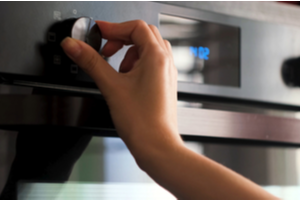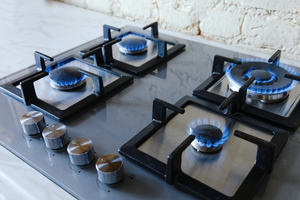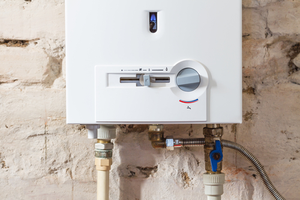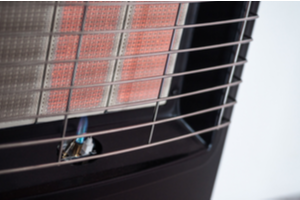A buyer’s guide to your next home gas appliance purchase
If you’re planning a kitchen or bathroom renovation, or your current gas appliances could do with an upgrade, there’s plenty to consider.
It’s important that you buy the right product for your needs – and you’re staying safe and compliant with installation.
Safety first: always call in the professionals 
When undertaking any improvements or appliance updates at your home, your safety – along with the safety of your family and property – is the top priority.
That’s why a licensed gasfitter must undertake work involving gas, including the installation and removal of gas appliances.
Remember, it’s illegal for an unlicensed person to install or repair gas appliances, so never attempt repairs or installs yourself.
See our tips for keeping your gas appliances safe and functional and if you ever pick up a funky smell in or around your home and suspect a gas leak, follow these simple steps to protect your safety.
Gas ovens
If you’re not planning a full kitchen overhaul, you’re most likely chasing a like-for-like replacement to fit snugly into the existing space, which means it all comes down to size and features.
Most standard domestic gas ovens are 600mm wide, though there are 700mm and 900mm options for larger families or those who spend a heap of time in the kitchen.
Depending on your needs and preferences, look for features like in-built thermostat, fan-forced functionality, rack and tray placement options or self-cleaning capacity.
Gas cooktops
Gas cooktops generally come in sizes between 60 – 90L, but how big you go depends on your allocated cooking area and any extensions or reductions you want to consider.
Stovetop size also influences burner numbers and variety, which should ideally involve larger burners to the back and small or simmering burners to the front to avoid having to lean over larger pots to stir sauces.
A wok burner to side of stovetops allows easy mixing and tossing when time is of the essence.
Available in a range of easy-clean materials and styles including stainless steel, ceramic, enamel and glass – a quality gas stove top also adds visual appeal to home kitchen makeovers or renovations.
Gas hot water systems
Hot water systems can be among the biggest energy consumers in the home, so it’s worth shopping around for the best appliance you can afford.
Deciding on the right hot water system for your home means choosing between two main designs: storage or continuous flow (instantaneous).
Storage hot water systems store heated water in a tank ready for use, but you’ll need to decide how your desired storage capacity marries with the available space and desired aesthetics for home installation.
Continuous systems are smaller and heat water only when required. So while it might take a few extra moments for hot water to flow, you’ll save energy by not having to warm your water around the clock.
Gas home heating
Home gas heaters come in portable and flued models.
While portable gas heaters can be moved to any room with a gas bayonet – they also push combustion emissions into the room being heated, which makes it important to pick the right size for the area.
Remember, a portable gas heater should never be installed in a room smaller than its rated capacity as emission volume in a small space may be a safety issue. 
Flued gas heaters are generally more expensive and are often installed in existing fireplaces with a chimney vent available.
But they can also be installed as a fire box in any area of the home as long as a flue is part of the process, which extracts emissions upwards and outwards from the area being warmed.
Look for features like a thermostat, child lock or cleaning alerts to ensure winters at home are safe, warm and energy-efficient.
There’s also the option of installing a more elegant gas fireplace in your home.
The people’s choice
The ProductReview community continually shares feedback on  ovens, gas cooktops, gas hot water systems, and gas heaters. Check out what ranks highest with the Australian community via ProductReview.
ovens, gas cooktops, gas hot water systems, and gas heaters. Check out what ranks highest with the Australian community via ProductReview.
About ProductReview
PoductReview.com.au is Australia’s first and most comprehensive consumer opinion site, providing a platform where people can rate and review services and products and the shops that sell them.
Kleenheat took top honours in the “Energy provider” category in the 2021 ProductReview Awards – representing the best and most reliable purchasing choices available to Australian energy consumers in 2020.